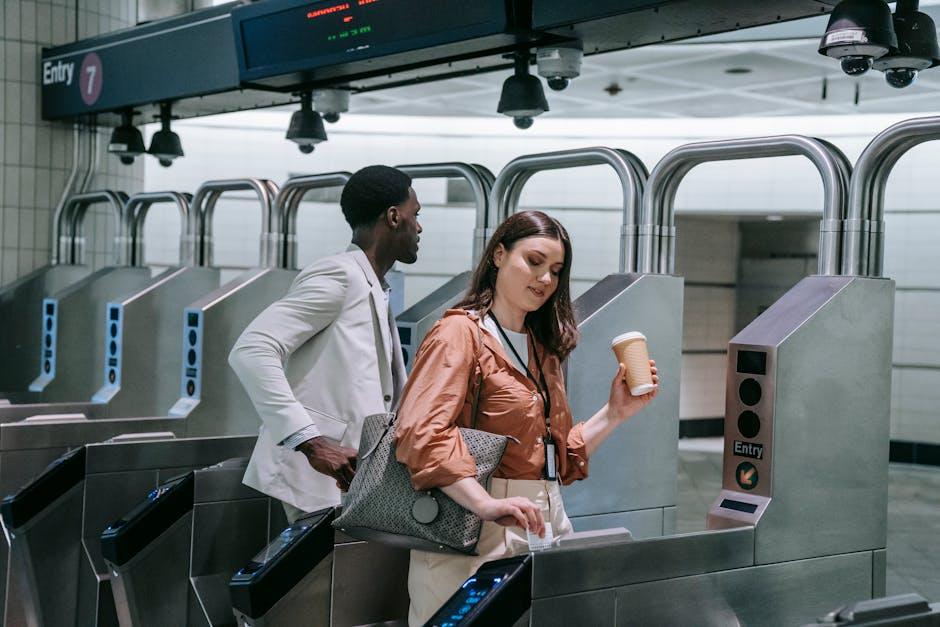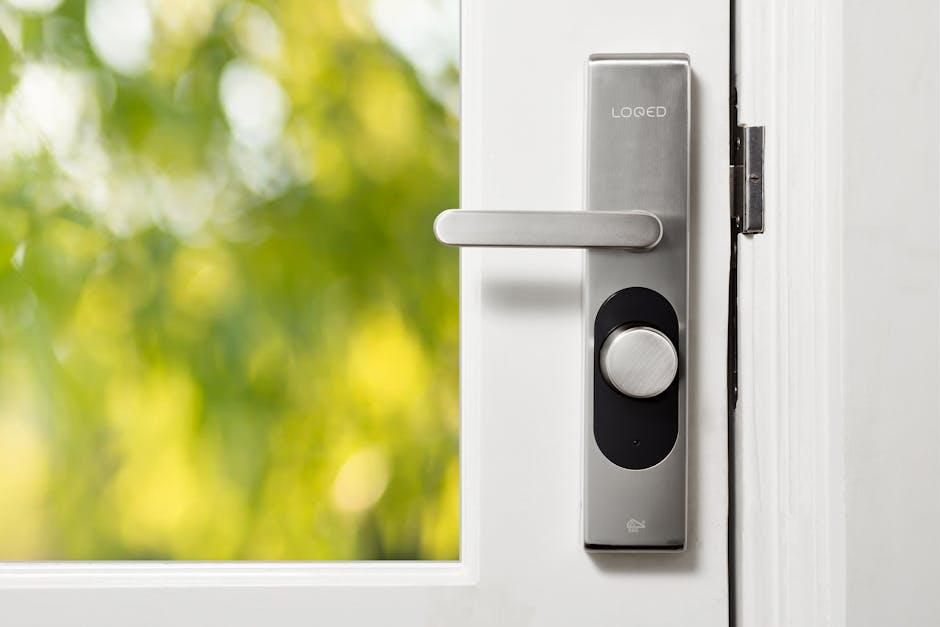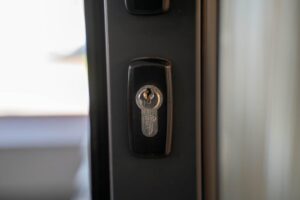In today’s fast-paced business world, convenience and security go hand in hand-especially when it comes to controlling access to local offices. Traditional keys are increasingly giving way to smarter, more versatile solutions that not only streamline entry but also enhance safety for employees and visitors alike. As technology evolves, keyless entry systems have emerged as a compelling choice for businesses aiming to balance efficiency with protection. This article explores the best keyless entry options tailor-made for local offices, helping you unlock the future of secure access without the hassle of physical keys.
Table of Contents
- – Understanding the Benefits of Keyless Entry Systems for Office Security
- – Exploring Different Keyless Entry Technologies and Their Suitability
- – Top Features to Look for in Keyless Entry Solutions for Local Offices
- – Detailed Reviews of Popular Keyless Entry Options for Small to Medium Workspaces
- – Installation Tips and Maintenance Best Practices for Seamless Access Control
- Q&A
- The Way Forward

– Understanding the Benefits of Keyless Entry Systems for Office Security
Replacing traditional locks with keyless entry systems revolutionizes office security by eliminating common vulnerabilities associated with physical keys. Employees no longer risk misplacing keys or lending them to unauthorized individuals, thus significantly reducing security breaches. Additionally, the ease of managing access permissions remotely offers facility managers unparalleled control and flexibility-allowing immediate updates to who can enter specific areas without costly lock replacements.
Key advantages include:
- Enhanced convenience with smartphone-enabled access
- Customizable access codes tailored by department or individual
- Automated entry logs that audit all access activity transparently
- Integration capability with wider office security systems like CCTV and alarm alerts
| Feature | Benefit | Office Applicability |
|---|---|---|
| Biometric Authentication | Highly secure, eliminates need for codes | High-security zones, executive suites |
| PIN Code Access | Easy to update and share temporarily | General offices, shared conference rooms |
| Mobile App Control | Remote management from anywhere | Facilities with multiple entrances |

– Exploring Different Keyless Entry Technologies and Their Suitability
When choosing a keyless entry system for local offices, it’s essential to understand that not all technologies offer the same balance of security, convenience, and cost-efficiency. RFID cards are a popular choice, providing quick access with minimal wear and tear on hardware. They’re excellent for mid-sized offices where managing multiple users is a priority, as they can be easily programmed or deactivated through centralized software. Meanwhile, biometric scanners such as fingerprint or facial recognition provide heightened security, ideal for offices dealing with sensitive information. Their soft limits on access control make them a superior choice for smaller, security-conscious environments, though they come with higher upfront investment and maintenance requirements.
- Bluetooth-enabled smart locks offer unparalleled convenience by integrating with smartphones, eliminating physical tokens while allowing remote access management.
- Keypad entry systems combine affordability with ease of use and are well suited to offices with frequent visitor access where codes can be regularly updated for safety.
- Cloud-based systems empower administrators with real-time monitoring and instant user access adjustments, enhancing operational flexibility.
| Technology | Security Level | Ideal Office Size | Cost Range |
|---|---|---|---|
| RFID Cards | Medium | Small to Medium | $$ |
| Biometrics | High | Small | $$$ |
| Bluetooth Locks | Medium | Small to Large | $$$ |
| Keypad Systems | Medium | Small to Medium | $ |
| Cloud-based Access | High | Medium to Large | $$$ |

– Top Features to Look for in Keyless Entry Solutions for Local Offices
When selecting a keyless entry system for a local office, prioritizing robust security measures is essential. Look for features such as multi-factor authentication, encrypted entry codes, and automatic lock timing to enhance safety without complicating access. Additionally, ease of management plays a crucial role-systems that offer user-friendly apps or web portals allow office managers to quickly add or remove authorized personnel, reducing administrative burdens.
Other pivotal attributes include compatibility with existing infrastructure and scalability. Whether integrating with an existing alarm system or accommodating future expansion, flexibility ensures your solution remains relevant over time. Consider these capabilities:
- Remote Access Control: Grant or revoke entry remotely through mobile devices.
- Audit Trails: Comprehensive logs detailing who entered and when, aiding in security oversight.
- Power Backup: Uninterrupted operation even during power outages.
- Durability: Systems built to withstand daily office wear and environmental factors.

– Detailed Reviews of Popular Keyless Entry Options for Small to Medium Workspaces
When selecting a keyless entry system for small to medium workspaces, it’s essential to balance security, convenience, and budget. Leading models like the Schlage Encode Smart WiFi Deadbolt offer seamless installation and integration with popular smart home systems, making them ideal for offices that prioritize remote access and real-time monitoring. Meanwhile, the August Smart Lock Pro stands out for its easy retrofit on existing doors and advanced features such as auto-locking and virtual keys that employees can share securely via smartphone apps.
Other notable contenders include the Yale Assure Lock SL, known for its sleek design and compatibility with multiple digital platforms, and Kwikset Halo Touch, which combines fingerprint recognition with a touchscreen keypad for quick entry and enhanced security. To assist you in narrowing down your choice, here’s a quick comparison of key features:
| Model | Access Methods | Smart Integration | Unique Feature | Price Range |
|---|---|---|---|---|
| Schlage Encode | Keypad, App | Alexa, Google | Built-in WiFi | $$$ |
| August Smart Lock Pro | App, Auto-Lock | Apple HomeKit, Alexa | Easy Retrofit | $$$ |
| Yale Assure Lock SL | Keypad, App | Alexa, Google | Touchscreen Keypad | $$ |
| Kwikset Halo Touch | Fingerprint, Keypad | Alexa | Biometric Entry | $$ |

– Installation Tips and Maintenance Best Practices for Seamless Access Control
Ensuring a smooth installation process begins with a detailed site assessment to identify optimal placement for your keyless entry devices. Select locations with easy access for users but hidden from direct exposure to harsh weather and vandalism. Utilize professional-grade drills and mounting brackets designed specifically for electronic locks to avoid damaging delicate internal components. Consider integrating your entry system with existing IT infrastructure during setup for seamless functionality, reducing future compatibility issues and downtime.
Routine maintenance extends the life and reliability of your access control system. Establish a checklist including battery replacement schedules, firmware updates, and physical inspections for wear and tear. Cleaning keypads or biometric sensors with non-abrasive materials prevents misreads and preserves sensor accuracy. Below is a quick maintenance guide for typical keyless entry systems:
| Task | Frequency | Recommended Tools |
|---|---|---|
| Battery Check & Replacement | Every 6 months | Multimeter, Replacement Batteries |
| Firmware Updates | Quarterly | Wi-Fi connection, Update Software |
| Physical Inspection | Monthly | Soft Cloth, Screwdriver Set |
| Sensor Cleaning | Monthly | Microfiber Cloth, Isopropyl Alcohol |
Q&A
Q&A: Best Keyless Entry Options for Local Offices
Q1: What exactly is a keyless entry system, and why should local offices consider using one?
A1: A keyless entry system allows access control without the need for traditional keys. Instead, it uses codes, cards, biometric data, or mobile apps. Local offices benefit from keyless systems by improving security, reducing the risk of lost keys, and offering convenient access management-even remotely.
Q2: What types of keyless entry systems are best suited for local offices?
A2: Common keyless options include keypad locks, card readers, biometric scanners (fingerprint or facial recognition), and smartphone-enabled smart locks. The best choice depends on factors like office size, budget, security needs, and user preferences.
Q3: How secure are these keyless entry systems compared to traditional locks?
A3: When properly installed and maintained, keyless systems can be more secure than traditional locks. Many feature encryption, audit trails, and multi-factor authentication, making unauthorized access more difficult. However, security depends on the technology’s quality and correct usage.
Q4: Can keyless entry systems be integrated with existing office security setups?
A4: Yes, many keyless systems can integrate seamlessly with alarm systems, video surveillance, and access control software. This centralization helps streamline security management and provides comprehensive protection.
Q5: What are some recommended keyless entry brands or products for local offices?
A5: Popular options include Schlage Encode, Yale Assure Lock, Kwikset SmartCode, and Samsung SHS series. For biometric access, models like Suprema or HID are highly regarded. It’s advisable to evaluate features, customer support, and compatibility before deciding.
Q6: Are keyless entry systems cost-effective for smaller local offices?
A6: While the upfront investment might be higher than traditional locks, keyless systems often save money long-term by reducing rekeying costs and minimizing security breaches. Additionally, the ease of managing access without physical keys can save time and administrative effort.
Q7: How user-friendly are these systems for office employees?
A7: Most modern keyless systems prioritize user experience with intuitive interfaces, mobile app control, and quick access methods. Training is typically minimal, making them practical for everyday office use.
Q8: What maintenance is required for keyless entry systems?
A8: Regular software updates, battery replacements for wireless locks, and occasional hardware inspections keep these systems running smoothly. Some models also provide notifications when maintenance is needed, helping to prevent disruptions.
Q9: Can keyless entry systems accommodate temporary or visitor access?
A9: Absolutely. Many systems allow administrators to create temporary codes or grant limited-time access via apps or card credentials, making it easy to manage visitors, vendors, or temporary staff without compromising overall security.
Q10: How does adopting keyless entry reflect on a local office’s image?
A10: Implementing modern, technology-driven access solutions signals professionalism and a commitment to security and innovation. This can enhance client confidence and create a more efficient, forward-thinking workplace environment.
The Way Forward
In the evolving landscape of workplace security, choosing the right keyless entry system for your local office is more than a convenience-it’s a strategic move toward safeguarding what matters most. Whether prioritizing seamless access for employees, robust protection against unauthorized entry, or a balance of both, the options available today cater to a variety of needs and budgets. By thoughtfully considering your office’s unique requirements and the features highlighted, you can unlock a future where security and efficiency go hand in hand-no keys required.





